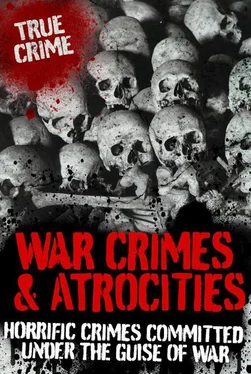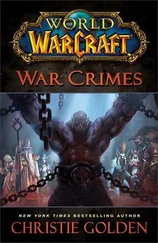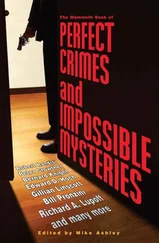The Katyn massacre is a prime example of the hypocrisy and conspiracies of international politics in an effort to cover up the enormity of human rights violations carried out during World War II.
BRUTAL MURDER AT BRONIKI
On 1 July, 1941, approximately 180 German soldiers of the 2nd and 6th Infantry Regiments and the 5th Artillery Regiment were taken prisoner by the Red Army in the town of Broniki in the Ukraine. Most of the soldiers were wounded from fighting, but the majority did not die from their injuries but at the hands of the Soviet soldiers. The following day, advancing German troops found the bodies of 153 men in a clover field near Broniki. According to the 12 soldiers who survived the attack, they were taken to a field just off the main road and forced to remove their clothes. Any valuables such as rings, watches and money were stolen along with all their clothes. Standing naked, with their backs towards the soldiers, they were fired on with machine guns and automatic rifles. The survivors managed to escape by running into nearby woods. Similar reports from other regiments brought to light that the Soviets were not taking any prisoners of war due to the bonuses they were being offered. It was alleged that for every 20 German soldiers, a Russian soldier would be granted a three-day pass to return to his family and would also receive a decoration or promotion in rank.
MASSACRE AT GRISCHINO
Grischino was an important industrial region in the Ukraine, which was initially occupied by German forces and then recaptured by a Soviet armoured division in 1943. In an counteroffensive attack in February 1943, the German 7th Armoured Division uncovered evidence of a horrendous massacre. They found the bodies of 406 German soldiers, 58 of whom were members of the Todt Organization, 89 Italian soldiers, 9 Romanian soldiers, 4 Hungarian soldiers and some Ukrainian volunteer workers. All 596 were Axis personnel that had been captured by the Red Army and brutally murdered and horribly mutilated. The female personnel had been bestially mutilated and raped. Their breasts and genitals were cut off and one had died with her legs splayed apart with a broomstick rammed into her vagina. The men had received similar treatment, with their ears and noses cut off, and genital organs removed and stuffed into their mouths. In a cellar room at the main train station, 120 German soldiers had been herded into a large storage room and gunned down.
PRISON MASSACRES
Soon after the Germans attacked the Soviet Union, the Soviets made a hasty retreat, which resulted in tragic consequences for all the political prisoners held in their jails. During the week of 22 to 29 June, 1941, literally thousands of Ukrainian and Polish prisoners were murdered in their cells, as the Soviet officers had no time to take care of them. In their panic to get away, the Soviets set fire to some of the prisons and the helpless inmates were burnt to death. In Lutsk, for example, out of the 4,000 inmates, 2,800 lost their lives. Some of them had been killed by hand grenades thrown into their cells and many more had been executed by a shot in the neck. In the cellars of Brygidki Prison, 423 bodies were recovered, with hundreds more piled up in the courtyard outside. In a military prison in Samarstinov, 460 charred bodies were discovered, many of them showing evidence of torture. The bodies were literally piled up layer upon layer until they nearly reached the ceiling. The stench of decomposing corpses was so nauseating that the German commander who made the grim discovery ordered that the bodies be covered in lime and that all doors to the cellars were to be bricked up. On 26 and 27 June, 520 Ukrainians were shot at Sambor. Another 700, including the entire local intelligentsia, were arrested and shot at Zlochev on 16 July. When bodies were discovered at Kremenets, they had no skin covering their bones, having been thrown into boiling water. It is estimated that as many as 10,000 Ukrainian and Polish prisoners were killed in their prisons by members of the Red Army.
UNIVERSITY OF LVOV
An Einsatzkommando unit killed 45 professors at the University of Lvov when the city was taken by Germans on 30 June, 1941. With the help of the Ukrainian ‘Nachtigall’ battalion, they started to round up the professors, their families and relatives, while the Jewish inhabitants of the city were shot on sight. Some of the professors, 38 in total, were taken to a place of execution just outside the city and shot to death. Another seven, including the former prime minister of Poland, Professor Dr Bartel, were shot in the courtyard of Brygidki Prison. Ironically, this was exactly the same courtyard where just days before they had discovered the bodies of the murdered prisoners.
VIOLENCE IN VINNITSA
When the Germans took occupation of the town of Vinnitsa in July 1941, they uncovered a mass grave in the prison courtyard. The grave, which was 20 m (65 ft) long by 6 m (19 ft) wide, contained the bodies of 96 Ukrainian political prisoners. Behind the prison, in another courtyard, they discovered a second grave. It is alleged that the prisoners were executed because the Soviets did not have time to evacuate them prior to the arrival of the German troops. Many other graves were uncovered in the area, but the true extent of the atrocity was never uncovered because the Red Army reoccupied the area a short while later. By the time the city was taken by the Red Army, a total of 9,439 bodies had already been discovered, all with bullet wounds to the neck. Ukrainian witnesses testified that trucks kept coming day and night carrying dead bodies to the burial grounds. It would appear that most of the victims were either farmers or field workers ( kulaks ), who Stalin classed as ‘enemies of the people’.
PINSK MASSACRE
At the beginning of German occupation in July 1941, Pinsk was occupied by approximately 26,000 Jews. Before World War II the Jews lived peacefully side by side with the Soviet people, but under the so-called ‘cleansing’ programmes, it wasn’t long before they became the persecuted race. Helped by their Polish accomplices, members of the SS murder squads started to round up between 7,000 and 8,000 male Jews in the area. All of them were executed. The remaining 18,287, including 6,400 women and children, were held in a newly established ghetto and forced to work for the occupying forces.
The ghetto covered an area of 23 streets, with 240 houses, with as many as ten people per room. The whole area was surrounded by a barbed-wire fence and it was here they lived in appalling conditions under the watchful eye of the military. On 27 October, 1942, all the occupants of the ghetto were ordered to gather near the Jewish cemetery at Karlin, which was about 4 km (2H miles) outside of the town. Each person was deprived of their money and valuables before being led to their site of execution. Left behind at the ghetto were around 1,200 people who were not well enough to make the journey. None of them survived – they were simply shot. In the three days of killing, as many as 11,000 Jews were murdered.
When Pinsk was liberated by the Red Army, they only found 17 half-starved Jews who had managed to hide for over 620 days and nights. Unfortunately, the majority of the Gentile population of Pinsk did little to help their Jewish neighbours. Instead, they waited for the opportunity to steal their possessions and move into their houses, and today, only about 500 Jews are left living in Pinsk.
UKRAINE
Ukraine had already suffered untold hardships before World War II, when Stalin engineered a famine in 1933 to destroy the kulaks and crush Ukraine’s growing spirit of nationalism. All roads in and out of the Ukraine were blocked, which meant that the farmers were deprived of seed stocks, grain and animals, and it wasn’t long before the farmers started dying of cold, hunger and disease. In an attempt to stay alive, they resorted to eating their pets, their boots, in fact anything they could get their hands on. It is estimated that as many as seven million, one-quarter of Ukraine’s population, starved to death.
Читать дальше












